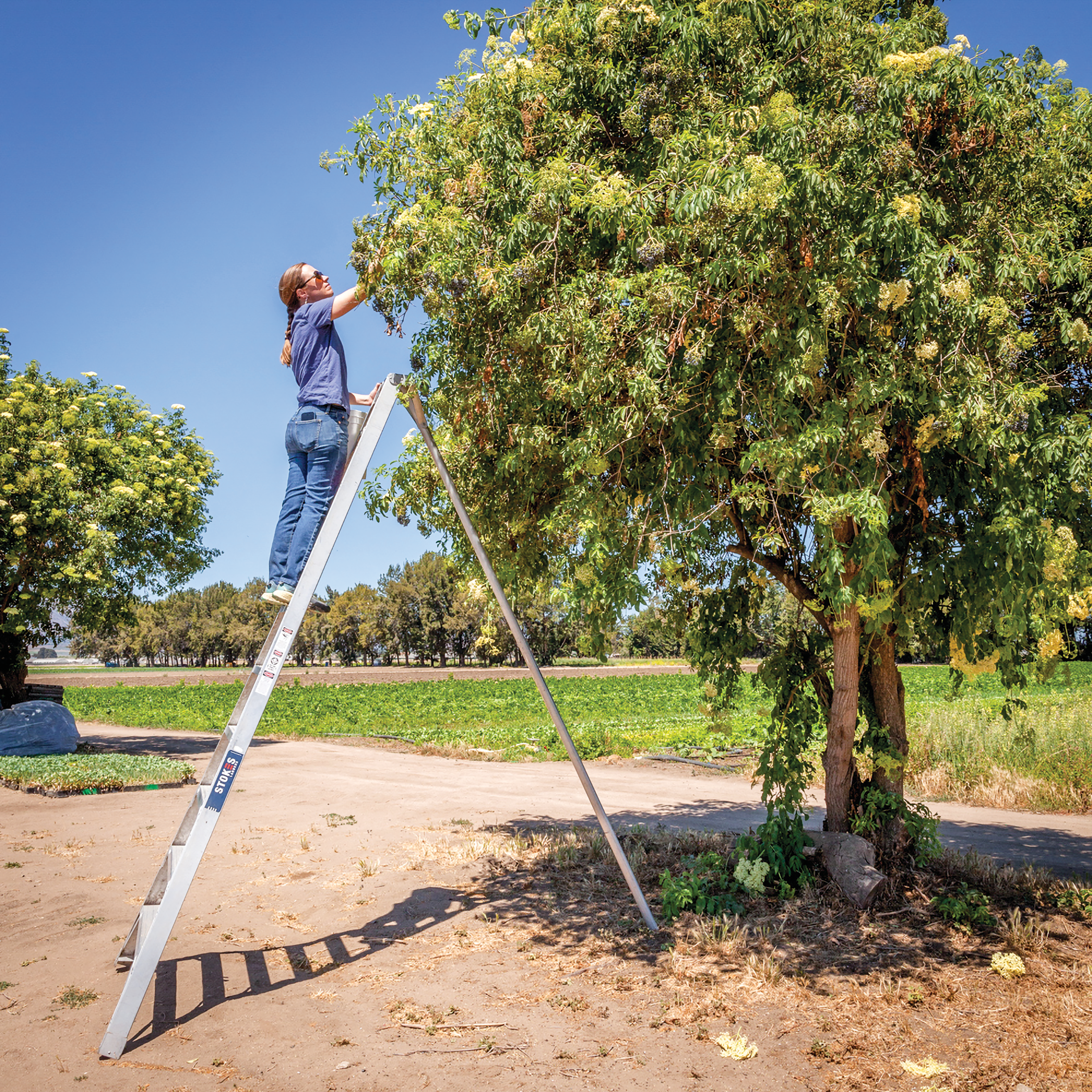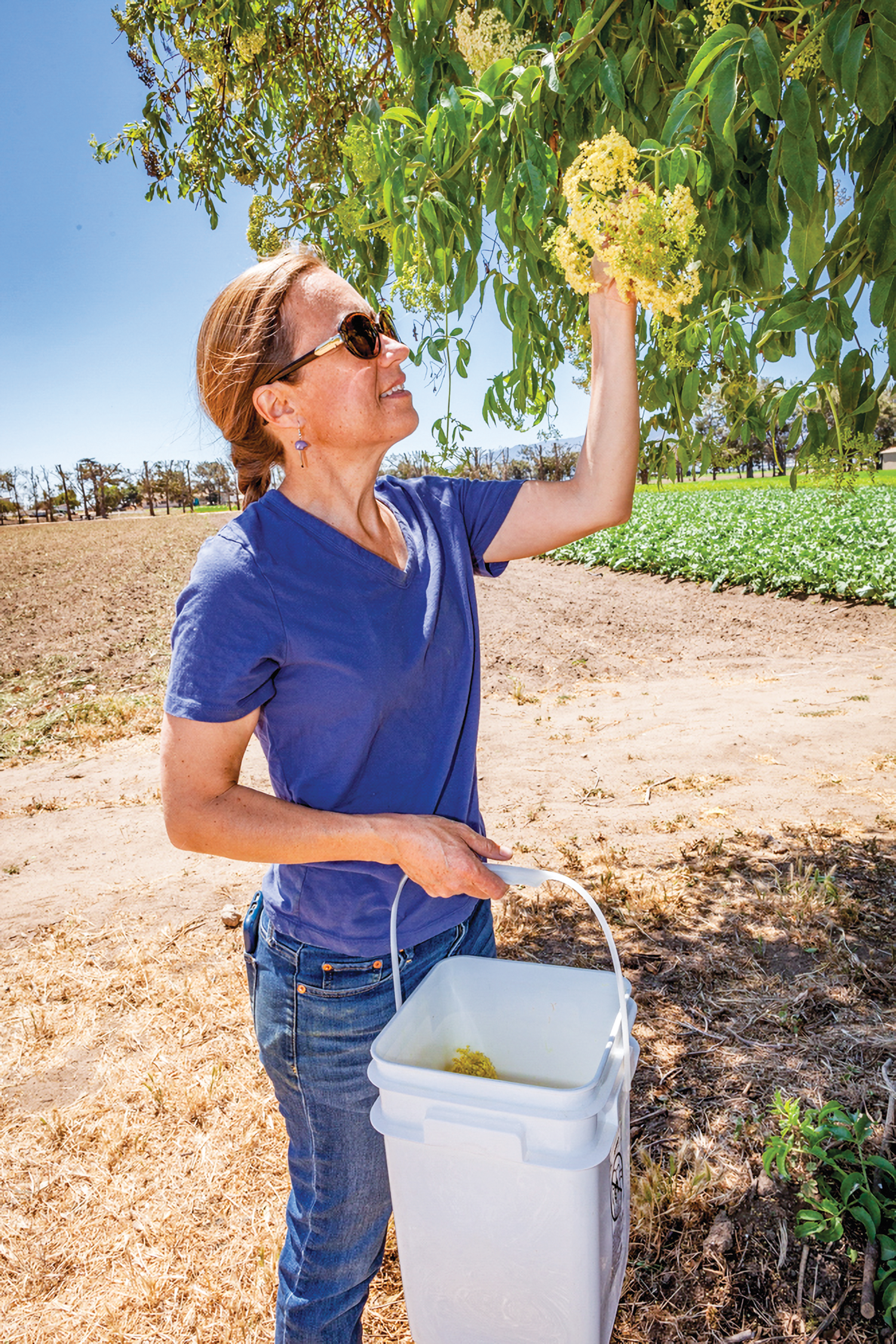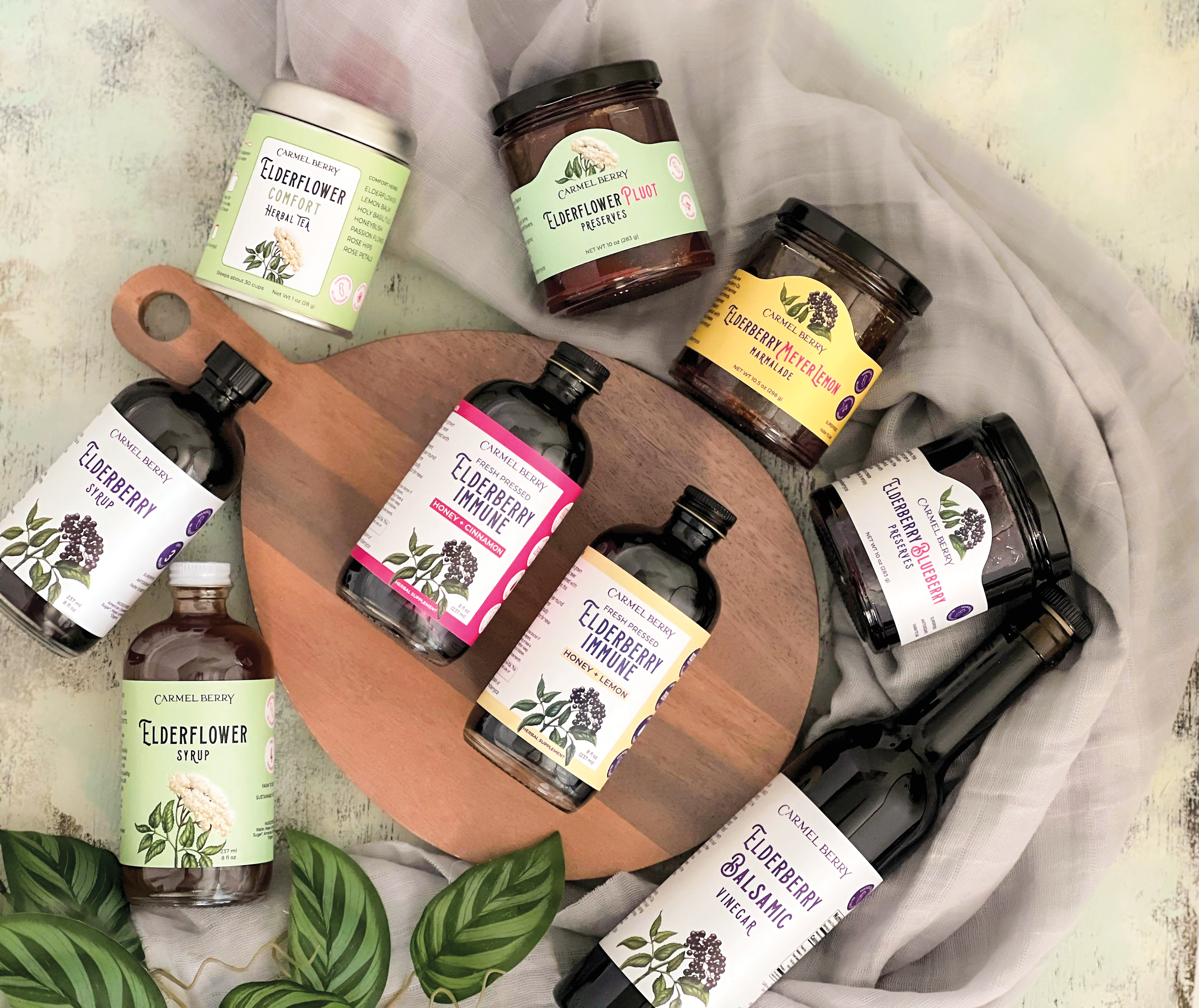Native shrub may have a future as commercial crop



By Caitlin Fillmore
Katie Reneker discovered the natural immune-boosting properties of elderberries in 2015, trading homemade syrups with her Carmel Valley neighbors who let her forage for the native plant.
That inspired her to produce elderberries, as she looked to commercialize what has been largely a wild shrub hardly seen as a potential cash crop in California. As her idea grew into a business, about a dozen local farmers agreed to establish small trial plots.
By 2017, a farmer in southern Monterey County offered to help Reneker plant 3 acres of American elderberries, a Midwestern cultivar prized for its pest resistance and strong, uniform yield. The niche crop, which grows abundantly throughout Europe and the Midwest commercially and as a native plant, has never successfully been cultivated on a production scale for West Coast consumers.
In 2020, after three years, Reneker’s first commercial elderberry crop was ready. Her 3 acres of elderberries, planted in the county’s Greenfield community, sold right before the first crop of berries matured. The new venture was launched, even if it was suddenly out of supply and needing to grow.
“It can be super frustrating to be the first person to try things. I can’t even describe how much has been lost,” said Reneker, who has since emerged as an advocate and mentor for elderberry farming in California. “But all the failures I experienced in those three years were super helpful in switching to (thinking), ‘How can we move the native blue elderberry forward?’ Instead of us starting all over, we would support other growers.”
Small-scale elderberry production is luring other upstart growers, said Sonja Brodt, the agriculture and environment coordinator for the University of California Sustainable Agriculture Research and Education Program. While limited numbers of farmers use the plant for hedgerows for other crops, ambitious elderberry producers are looking to capitalize on natural hedges on their land to sell value-added products to restaurants or consumers.
Brodt said it is hard to determine the amount of the crop produced in the state because elderberries don’t fall under traditional farming metrics. “This is a wild, unbred plant with no cultivars (and) has no known consistency of production that you normally look for in a commercial crop,” she explained.
Though large-scale demand for commercial production is lacking, Brodt said there is immediate potential from small elderberry businesses that source fresh, local products.
Reneker is a case in point. She established Carmel Berry Co. to share American-sourced elderberry and elderflower products to customers looking for artisanal superfoods. The majority of elderberry and elderflower products available in the U.S. are imported from Europe and sold dried. But Reneker sources fresh berries domestically and freezes them.
“Elderberries taste a heck of a lot better when it comes fresh instead of dried,” Reneker said. “I believe food is our medicine, and healthy things should be delicious.”
Small, round elderberries grow in compact clusters within large shrubs or hedges that can reach more than 6 feet tall. The berries taste like a potent, flavorful cross between a sweet, juicy blueberry and a tart pomegranate. Elderflowers are small, delicate white blooms that taste like “summer sunshine,” Reneker noted.
Reneker now purchases 8,000 pounds of elderberries and 20 pounds of dried flowers from American producers each year. These become Carmel Berry preserves, syrups, teas, balsamic vinegars and liquid herbal supplements. They are sold in specialty grocery stores, including Whole Foods in Northern California, Market of Choice in Oregon and Erewhon in Southern California. But the products all come from elderberries sourced outside the West Coast, which presents Reneker’s next ambitious goal.
After she said goodbye to the 3 acres in Greenfield, Reneker set out to uncover the possibilities for native elderberries here in California. A former teacher, Reneker transitioned to a role collaborating with advocates, mentors and researchers such as UC’s Brodt to advance studies and awareness of the native West Coast blue elderberry, or Sambucus caerulea.
More than 300 people participated in online workshops held by Reneker during the COVID-19 pandemic, and more workshops are being scheduled. Reneker also independently funds $500 microgrants to fund projects such as fencing or irrigation for growers interested in diversifying with elderberries. Carmel Berry has given away $12,000 in microgrants so far.
Brodt said she does not envision elderberry growth as endless rows of plants grown in a commercial operation but rather a creative, “multi-objective” solution. She said the plant may hold the potential for providing direct income to small- and medium-size farms and benefiting the ecosystem.
Native elderberry hedgerows provide habitat for diverse wildlife and efficiently store carbon within its dense interior, according to the UC Agriculture and Natural Resources website. Brodt said these plants offer an “adaptation advantage” in a changing climate, growing in various elevations and a range of temperatures.
“We know there is not enough hedgerow planting in general, whether it is elderberry or other native plants,” Brodt said. She mentioned California Department of Food and Agriculture grants as possible funding sources for planting hedgerows.
Reneker said she sees continued collaboration as the key to establishing a prosperous future for the blue elderberry.
“We’re still really on the frontier of growing elderberries commercially on the West Coast. It makes no sense for all of us to reinvent the wheel individually,” Reneker said. “I love to work with farmers willing to diversify and grow something new.”
(Caitlin Fillmore is a reporter in Monterey County. She may be contacted at cslfillmore@gmail.com.)




